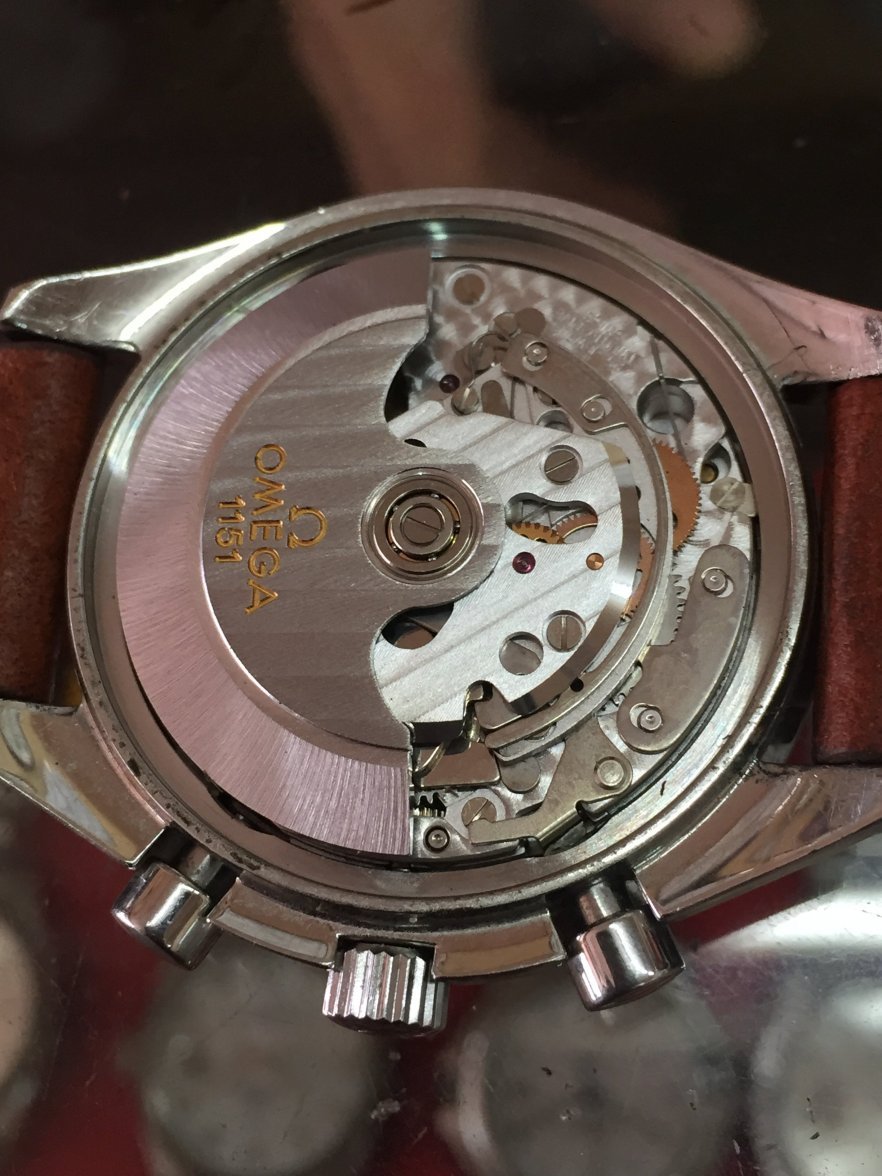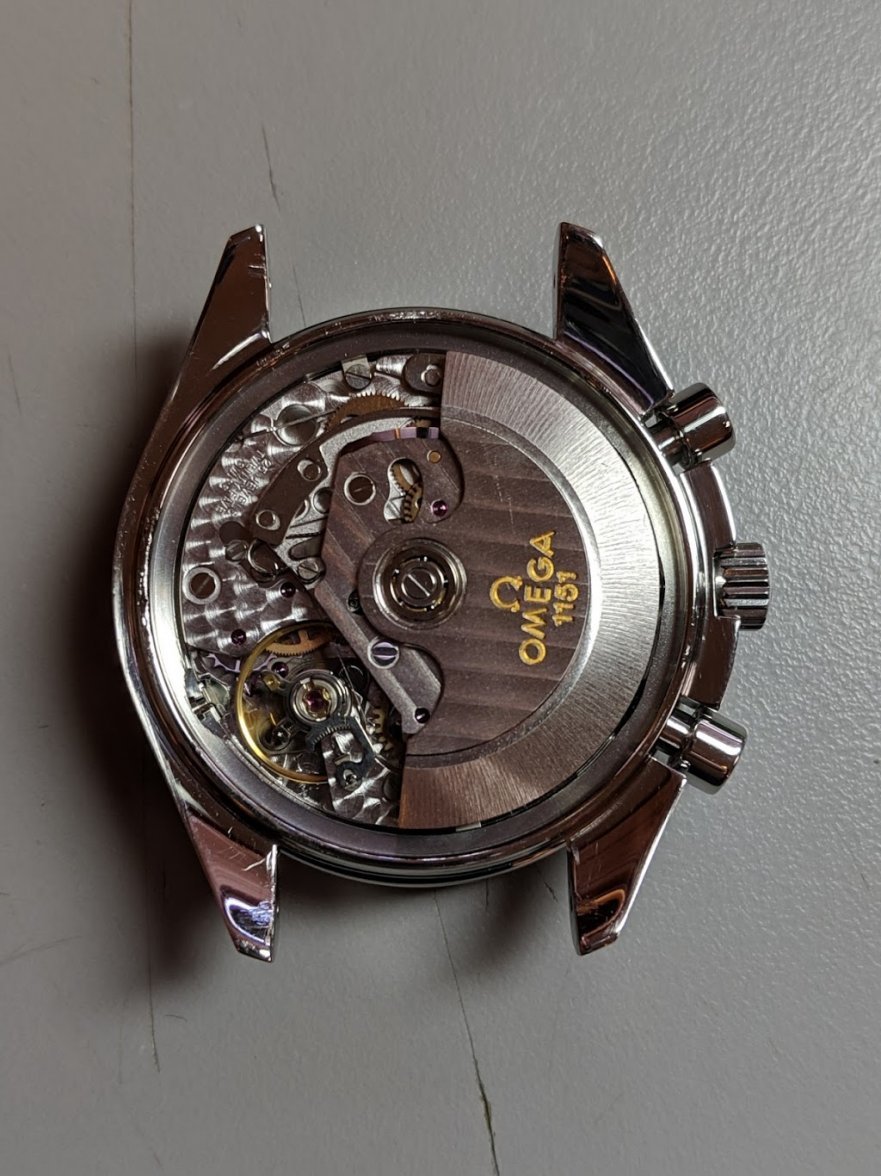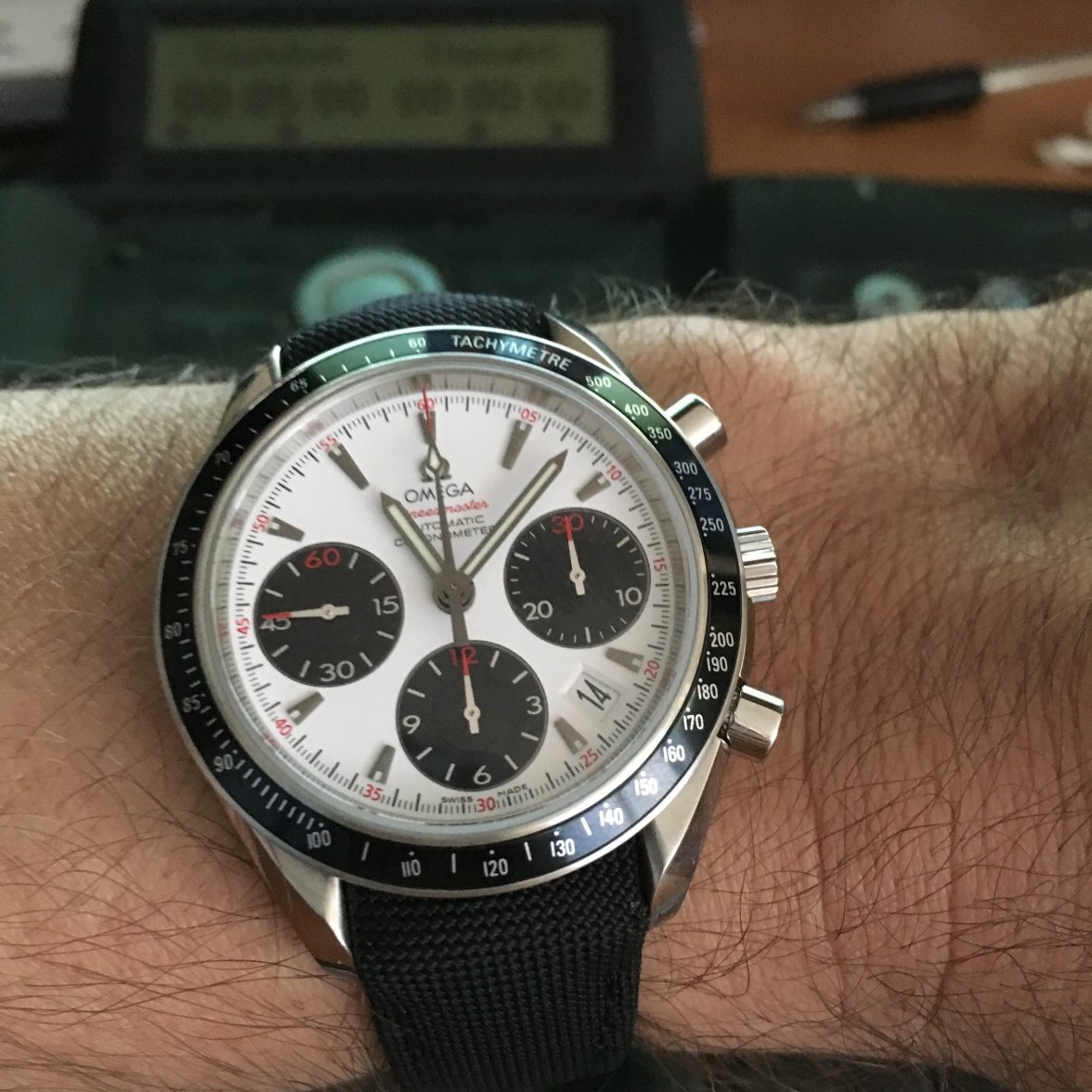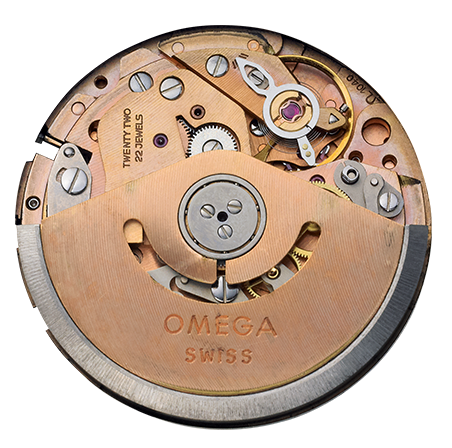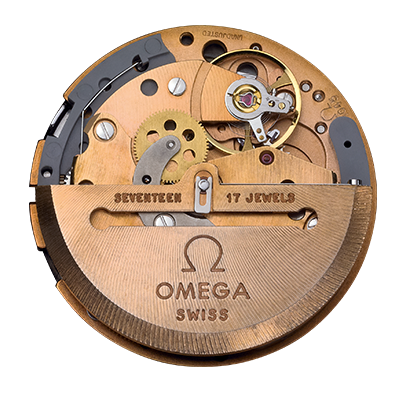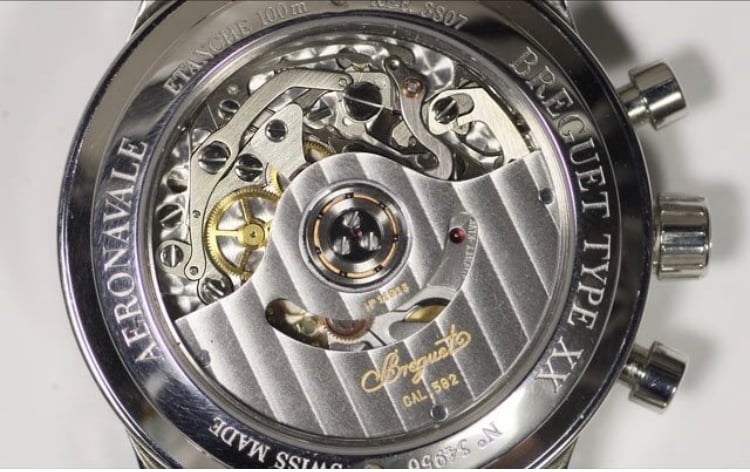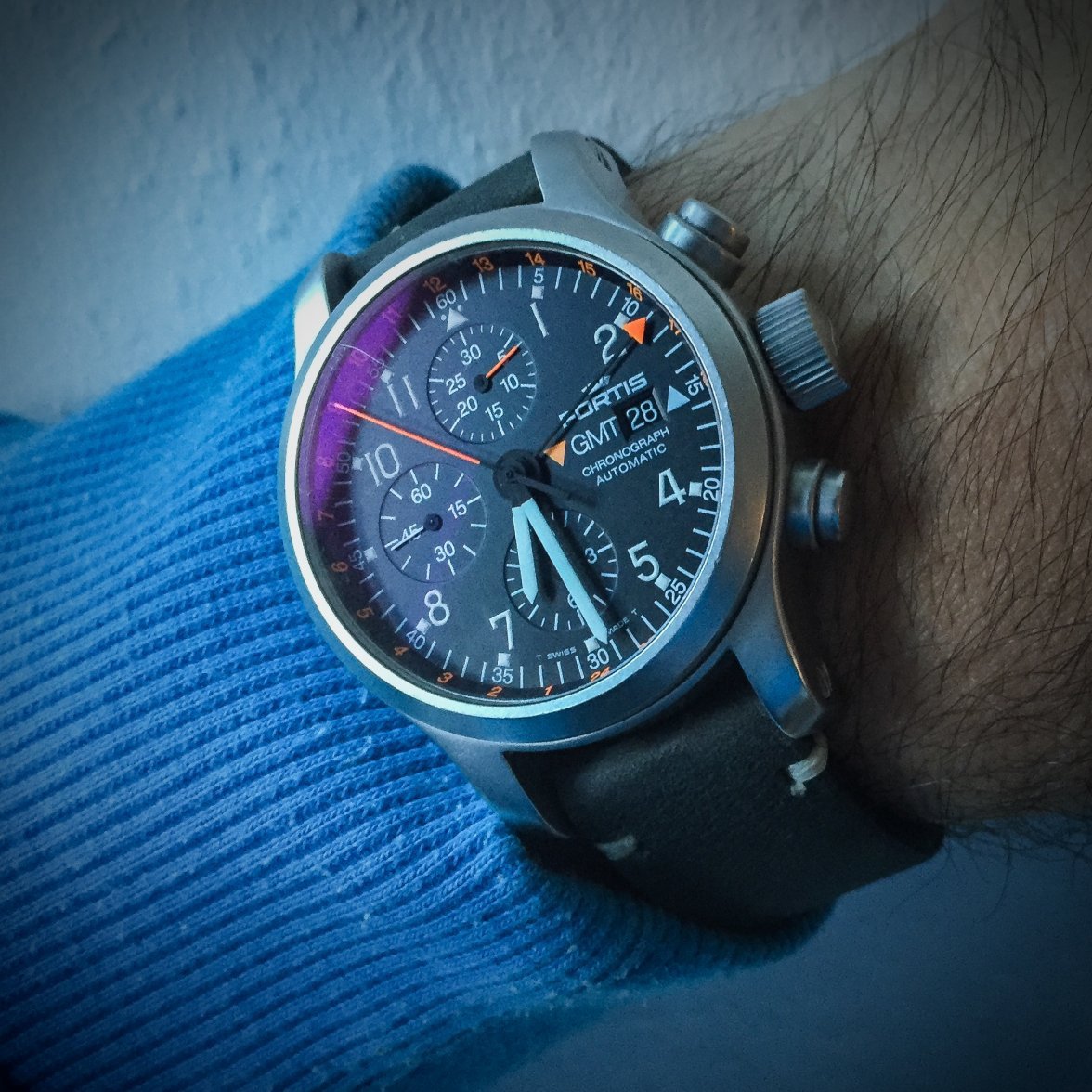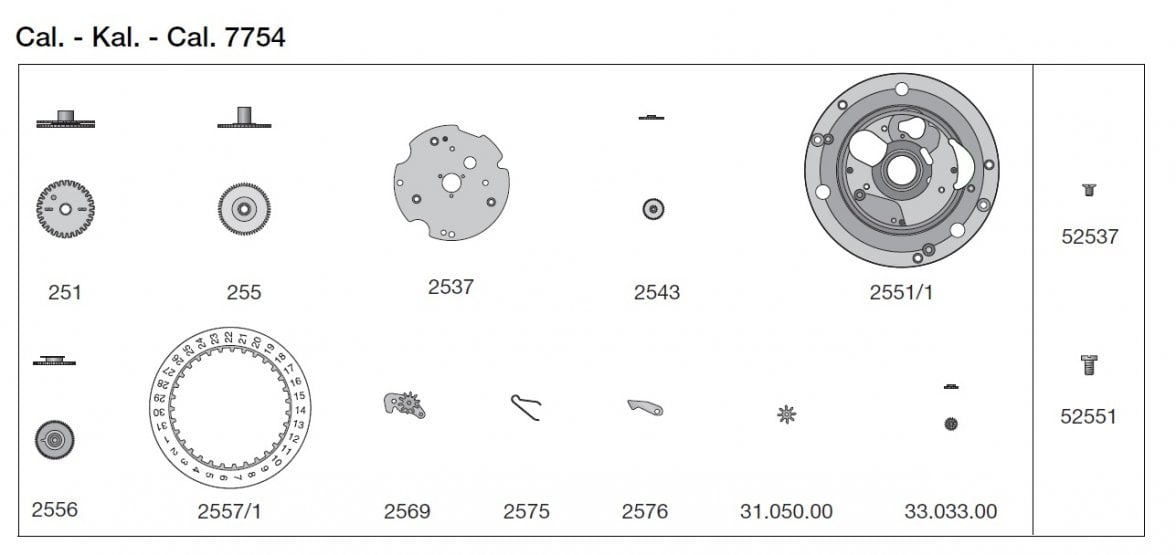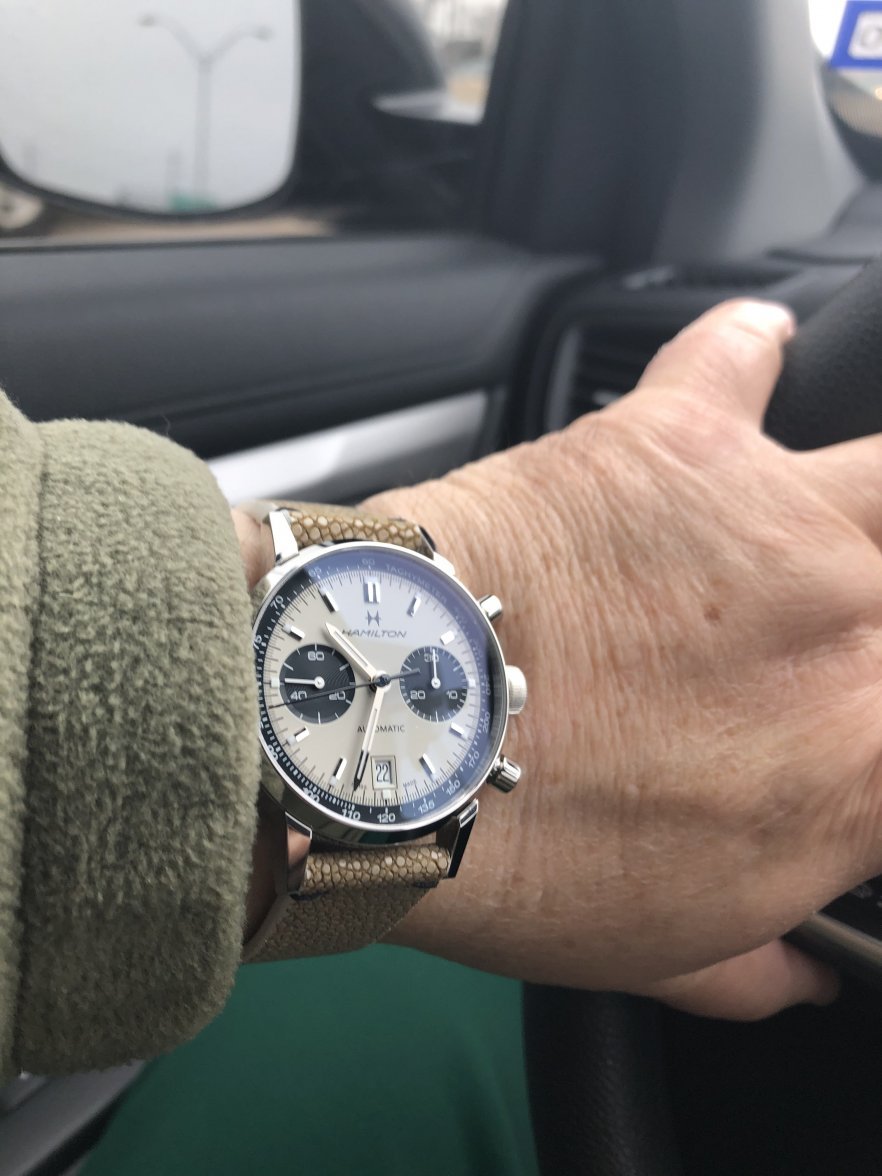Valjoux 7750 Chrono movement
Foo2rama
··Nowhere near as grumpy as he used to be...Archer
··Omega Qualified WatchmakerI have had a couple of Val7750 chronographs and I haven't been impressed. Noisy, thick, and inefficient. A utilitarian movement that isn't particularly high quality.
Sorry, "thems fightin' words!" 😀
Can you please describe what "high quality" means to you? In my experience the 7750 is robust, accurate, and very reliable - to me those are very much attributes of a high quality movement. It is large and thick, but those things contribute to it's robust and reliable nature. It's not necessarily pretty, but decoration levels vary quite substantially depending on who is using it and what configuration it's in. For example the 7750 variants used by Omega are decorated at least as well as the 1120 or 2500 are
By the way, the 7750 isn't as thick as people sometimes make it out to be. It is 7.9 mm, and to throw out a few comparisons, the Omega 9300 is 7.6 mm, so not a lot thinner. The Omega 1040 is 8 mm thick, and the 1045 is 8.2 mm, so the 7750 is hardly the thickest automatic chronograph out there.
Yes, the Zenith El Primero is thinner, but have you serviced one? Let's just say they are not my favourite movement for many reasons, one of them being that there are about 40 different screws used in that movement, so that is what I would call an inefficient design personally. By comparison, the 7750 uses just 8 different screws for the whole movement.
There is a reason that the 7750 is so ubiquitous, and it's because it's a proven performer. As I have often said, when I have a 7750 on my bench, I know I'm going to have a good day, and that service will generally be smooth. There are few weak spots, and the final result is always quite accurate, with little in the way of intervention required to get there from me, so I don't often have to get into procedures like dynamic poising to get decent positional variation. Just simple adjustments will get you there - it is probably the most accurate movement I see post service on average, and that includes variants of the 7750 that are not chronometer certified.
... and inefficient because of unidirectional winding. If your autowinder doesn't have a unidirectional mode, your 7750 will eventually run down while sitting on the winder. Just an unsophisticated movement IMO.
Interesting perspective on unidirectional winding. I don't agree actually, and although many people use winders, the true measure of efficiency is best taken on the wrist. Having serviced more 7750's than I can count, I can confidently say that it is more than efficient enough to stay wound when people wear the watch, which is what counts (never had anyone complain that one would not stay wound on their wrist). Of all the things that the 7750 is, inefficient at winding is certainly not one of them.
The subject of winding efficiency is far more complex than saying that winding in one direction is less efficient than winding in two directions. Certainly on the surface it would seem logical, but you have to dig deeper to fully understand the variables that make up winding efficiency, and the compromises that are present in both single and dual direction winding designs. Depending on how active you are, unidirectional winding can actually be more efficient than bi-directional winding, since there are inherent losses from the dead angle in bi-directional designs. The dead angle is the angle that the rotor traverses where no winding occurs, because the winding system is changing directions in order to wind from one direction to the other. This is why as people lead more sedentary lifestyles, some makers are choosing unidirectional designs, because they wind more with smaller movements of the wrist.
The 7750 uses a rather large and heavy rotor compared to many others, so for example I perform what is known as a damping test on these and others to determine if the bearing is in a good state. This test involves suspending the rotor on a piece of peg wood, turning it to a position that is 90 degrees from the hanging position, like so:

Then letting it swing freely until it stops:

Depending on the movement, the time that is required for it to swing and be considered good will vary. So for a 2892/1120 in the photos, the time should be at least 45 seconds before it stops swinging and comes to rest. For the 7750, you are looking for 1 minute and 20 seconds, and I have often had them swing for over 2 minutes in this test. This means the rotor is heavy by comparison, contributing to the ability to wind.
In fact the ETA 2892, which winds in both directions, is known to be one that isn't a particularly efficient winder, and many watchmakers I correspond with complain about them coming back for this reason after service. It's simply not an issue with the 7750.
So from my perspective as a watchmaker that has to deal with them often, they are a movement I believe is a top performer in my books.
Cheers, Al
valkyrie_rider
·I have always preferred the Lemania 5100 for its lay out and feel, but that is a real tractor in comparison when you get under the bonnet.
The lemania 5100 (or omega cal 1045) is a child of the quartz crisis and, even though sturdy and reliable, is ugly and utilitarian.
It is quite interesting to compare it to its predecessor, the cal 1040. Less jewels, simpler rotor, no bearings in the rotor, less parts, plastic parts, etc.
Makes you wonder... what happened here, moving from the 1040 to the 1045?
;-)
That being said, it is a reliable workhorse.
Edited:
chum_2000_uk
·I've been browsing Tudor Prince Date's (pre tiger) and Big Blocks, but my personal view is that they are now a bit pricey for what they are (especially the Big Block).
I really like the look of them overall, but the movement, and more specifically the sub-dial layout lets them down imo. If they were the price they used to be say 10 or 20 years ago I'd probably snap one up, but at around £3k for a pre-tiger or £5k+ for a Big Block there's plenty of other watches I'd prefer to spend that kind of money on, with better movements etc.
I really like the look of them overall, but the movement, and more specifically the sub-dial layout lets them down imo. If they were the price they used to be say 10 or 20 years ago I'd probably snap one up, but at around £3k for a pre-tiger or £5k+ for a Big Block there's plenty of other watches I'd prefer to spend that kind of money on, with better movements etc.
axl911
·Archer,
Then would you classify the non-jewel bearing on things like the chrono seconds hand a weak point of the 7750?
Then would you classify the non-jewel bearing on things like the chrono seconds hand a weak point of the 7750?
Archer
··Omega Qualified WatchmakerArcher,
Then would you classify the non-jewel bearing on things like the chrono seconds hand a weak point of the 7750?
Non-jeweled bearing on the chronograph seconds hand? Well first one end of the chronograph seconds recording wheel most definitely uses a jewel. The other end goes through a tube in the center of the movement, and it is not a spot I've seen wear before.
So the answer to your example is no, I do not consider it a weak spot in the slightest, as it's the same as most other chronographs I can think of off the top of my head...
axl911
·Non-jeweled bearing on the chronograph seconds hand? Well first one end of the chronograph seconds recording wheel most definitely uses a jewel. The other end goes through a tube in the center of the movement, and it is not a spot I've seen wear before.
So the answer to your example is no, I do not consider it a weak spot in the slightest, as it's the same as most other chronographs I can think of off the top of my head...
I thought I have read (from somewhere) the 7750 chrono seconds hand does not use a jewel.
simonsays
·Indeed.
The lemania 5100 (or omega cal 1045) is a child of the quartz crisis and, even though sturdy and reliable, is ugly and utilitarian.
It is quite interesting to compare it to its predecessor, the cal 1040. Less jewels, simpler rotor, no bearing in the rotor, less parts, plastic parts, etc.
Makes you wonder... what happened here, moving from the 1040 to the 1045?
;-)
That being said, it is a reliable workhorse.
I love these movements, and Breguet obviously do too. Well enough to use them in the type XX
Dan S
·Sorry, "thems fightin' words!" 😀
Can you please describe what "high quality" means to you? In my experience the 7750 is robust, accurate, and very reliable - to me those are very much attributes of a high quality movement...
Well, your perspective is extremely valuable as always, and much more sophisticated than mine. Frankly, I normally don't chime in on these threads that compare movements, since I know that they are usually comparing apples to oranges, and my comments were obviously not sufficiently nuanced.
If I'm honest, I guess it simply comes down to the fact that I haven't viscerally enjoyed my own experiences with 7750-based watches (three in total). I don't like the way you feel the rotor moving around when you wear the watch. It "feels" clunky and unbalanced to me, although I realize that's a very subjective view. I found that I didn't choose to wear them, and eventually let them go; I have no plans to buy another.
In contrast, I have had the opposite experience with Zenith El Primero-based watches. They are a joy for me to wear, thin and smooth-winding, and I have had good luck with them mechanically. This is entirely from the user's perspective, and based on a puny sample size of three of each type. 😗
It is of course very interesting that the watchmaker's perspective is so dramatically different, but probably not enough to influence my choice about which watch to buy. 😁
Archer
··Omega Qualified WatchmakerIf I'm honest, I guess it simply comes down to the fact that I haven't viscerally enjoyed my own experiences with 7750-based watches (three in total). I don't like the way you feel the rotor moving around when you wear the watch. It "feels" clunky and unbalanced to me, although I realize that's a very subjective view. I found that I didn't choose to wear them, and eventually let them go; I have no plans to buy another.
And that's very fair. People have their own preferences and if you don't like the "7750 wobble" that's a perfectly valid (and not all that unusual) position to take.
It is of course very interesting that the watchmaker's perspective is so dramatically different, but probably not enough to influence my choice about which watch to buy. 😁
And I'm certainly not trying to convince people to buy or avoid any particular watch. I am a firm believer in buying what you like, not what other people feel you should buy. I cringe whenever I see a "Every collector should own a XXXX" posted on a watch forum, no matter what brand or watch XXXX is.
Cheers, Al
timestamp
·Here's a Fortis with a 7754, a version that adds a second timezone at the cost of the weekday.
The watch was nothing special, but it was my first chronograph, and I just *love* the dial and the hands 🥰.
The watch has been passed on for a very long time now, but its one of the pieces I still shed a tear for now and then.
The watch was nothing special, but it was my first chronograph, and I just *love* the dial and the hands 🥰.
The watch has been passed on for a very long time now, but its one of the pieces I still shed a tear for now and then.
Archer
··Omega Qualified WatchmakerHere's a Fortis with a 7754, a version that adds a second timezone at the cost of the weekday.
I just finished a similar one (white dial) recently...but it wasn't a 7754 in this one. The GMT was done with what I think is some sort of Fortis design:

The parts for advancing the GMT were certainly not the same as a 7754 anyway...
Alphasports
·Never been a fan of Fortis but those two are quite nice looking.
timestamp
·I just finished a similar one (white dial) recently...but it wasn't a 7754 in this one. The GMT was done with what I think is some sort of Fortis design:
Interesting! The info that it was a 7754 was really just conjecture... It didn't occur to me they might have their own modified design.
timestamp
·Never been a fan of Fortis but those two are quite nice looking.
Granted, they are a niche brand that has seen some decline in the last years. And they don't have a lot of classic models, and their history with the Russion space program seems... a little inflated 😉
But they do have a special place in my WIS heart, because back in the late 90s, I was working for a photographer who was doing their print catalogue at the time, and handling all these watches was one of the factors that got me hooked into the whole watch thing. I like the clean utilitarian design they used at the time.
TexOmega
·Similar threads
- Posts
- 7
- Views
- 784
- Posts
- 3
- Views
- 5K
- Posts
- 0
- Views
- 3K
- Posts
- 4
- Views
- 3K
